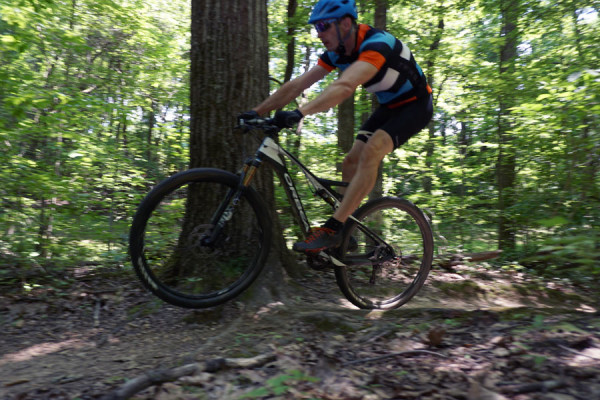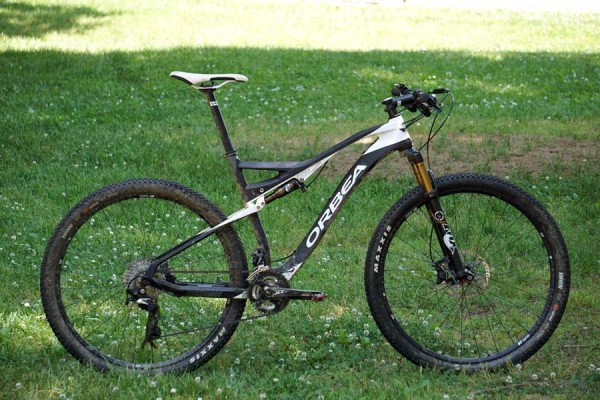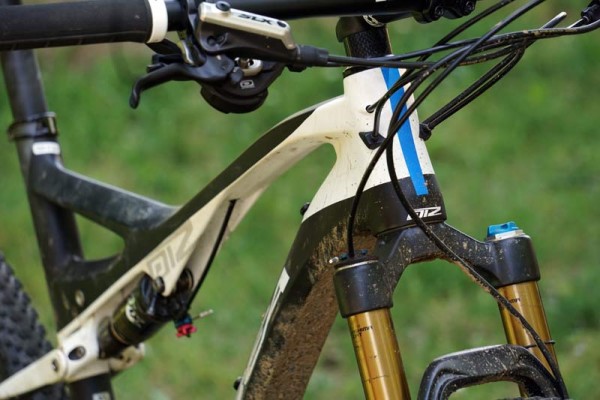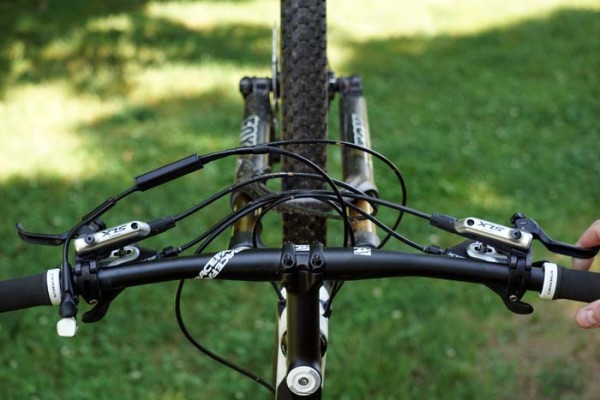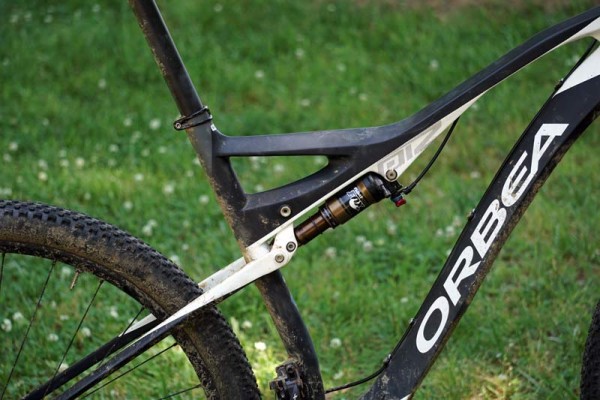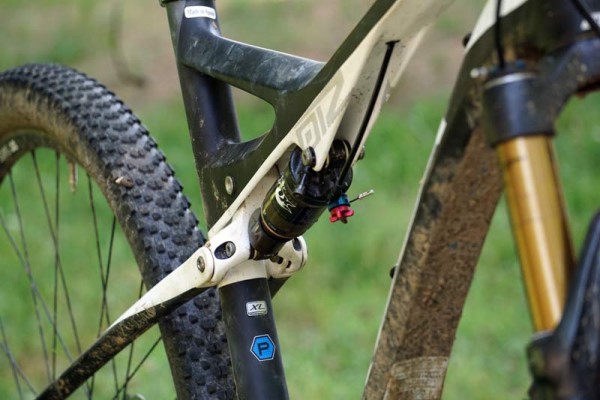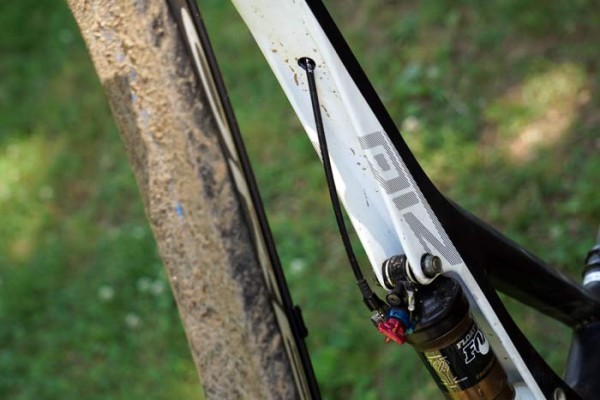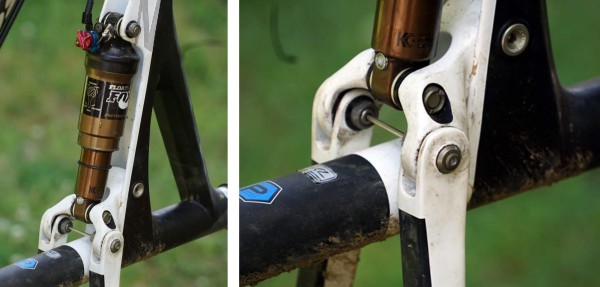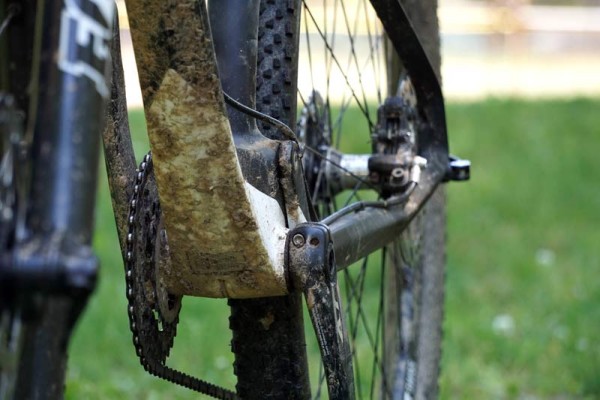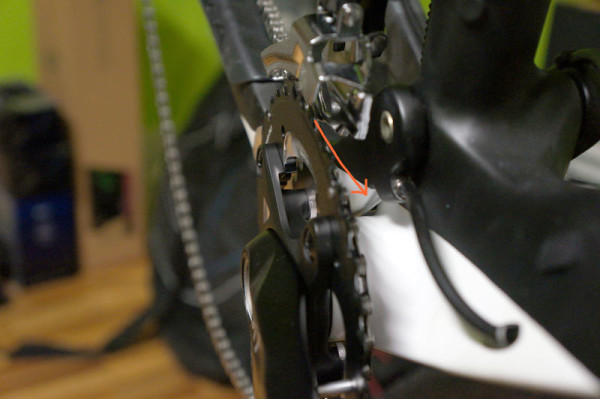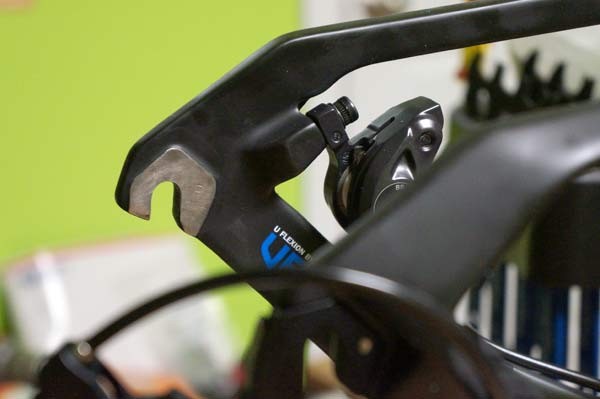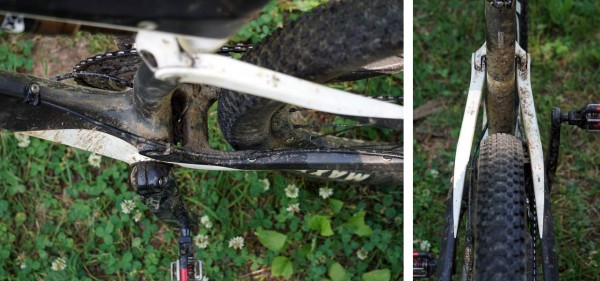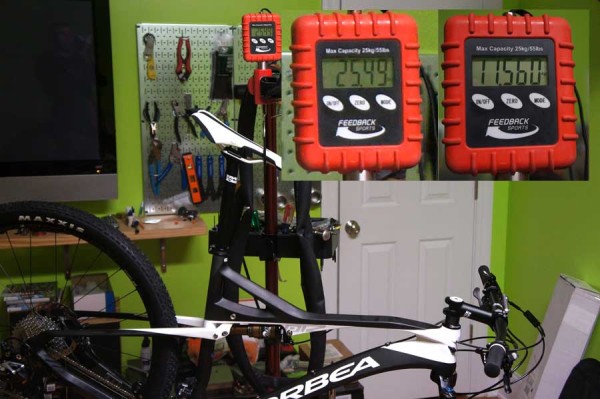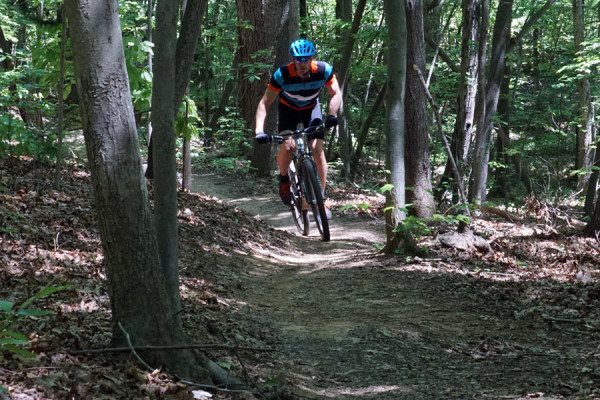First revamped in 2012 as a 26” World Cup race rocket, the Orbea Oiz switched to 27.5” and 29er wheels for the 2015 model year but kept it’s XC race pedigree. At the launch event, we rode it through the mountains of France, putting it through plenty of uphill and flowing pedaling sections and some steep, aggressive descents. First impressions were very good, so we brought one in for long term review.
The upper/mid-range Oiz M20 29er arrived, offering a mix of SLX, XT and XTR components, DT Swiss wheels and Race Face cockpit parts for $4,999. The Oiz is offered in both 27.5″ (S/M/L) and 29er (M/L/XL) wheel sizes, and carbon fiber levels. The M20 uses their OMP level carbon frame, which is about 200g heavier than the top level OMR carbon found on the M10 and higher models…which start at $6,299 and go way up from there.
On paper, the bike would be perfect for our very XC-ish local trails in Greensboro, NC. The rear suspension is efficient, travel is short and the frame was now proven under Catharine Pendrel. And for a while it lived up to the hype…
DETAILS & ACTUAL WEIGHTS
The spec at this level leaves little to be desired, using respected name brand parts everywhere. Like virtually every bike, it ships with tubes, but I immediately set up the Maxxis Ikon 29×2.20 tires tubeless.
The frame is heavily shaped everywhere, which is typical for Orbea. It’s done mainly for stiffness here, but as you’ll see, it also adds functionality. All internally run cables enter at the front of the head tube (shift cables and rear shock remote). The rear brake hose runs outside the downtube.
Stack and reach on the Oiz follow linear, proportional growth across frame sizes, and head tubes are short on all of them so the rider can get in a low racy position if desired.
If you appreciate having a lockout, you’ll like knowing the front and rear CTD suspension is controlled by a single lever, but it creates a very cluttered cockpit. Honestly, the rear suspension is so efficient here (thanks to the high leverage and compression ratios used, which are detailed in our post from the bike’s launch), that I kept it in Trail mode almost exclusively, even when descending because the “D” mode on Fox’s 2015 32-series forks was simply too soft and blew through the travel. Unless you’re racing for the rainbow stripes, it’s my opinion this bike would be better served (and lighter) by ditching the lockouts and going with the RS-1 up front. Or the new 2016 Fox 32. Considering the intended use, this bike screams for a better XC fork.
It’s worth mentioning that when we rode the Oiz at launch, several of us jimmied the cable’s position to set the fork in Trail while the shock went to Descend, which worked great.
The rear suspension linkage is minimal and sleek. Smaller frame sizes lack the split top tube, but it helps reinforce the seat tube on the XL we tested.
The frame is ready for any drivetrain and shock system, mechanical or electronic (Di2, iCTD). In fact, our first ride on the new XTR Di2 was on one of these.
The most unique feature of the Oiz is the small steel strut (looks like a spoke) used to tie the seatstay pivots together. It’s not there to keep each side from acting independently, rather to keep the linkage from spreading apart under compression and wearing prematurely. That’s the stated intent anyway, in reality it seemed to have a massive impact on rear end stability. Keep reading…
The bottom bracket shell is extra wide, sized for PF92. It, along with the angular downtube shaping made for a solid pedaling platform with negligible if any pedal bob while seated and minimal bob while standing. Putting the suspension in “Climb” mode made it feel like a hardtail.
On the other side of the BB, the rear derailleur cable housing exits the downtube and runs through a liner between the BB shell and swingarm and through a guide to redirect it along the bottom of the chainstay. Another cable port just above the one visible here is for Side Swing front derailleurs, but this bike used a traditional FD.
The seatstays are slim, designed to bow upward to make up for the lack of a rear pivot near the axle. Orbea stuck with a 135mm QR to save weight and make for quicker wheel changes. More opinion on this coming up soon, too…
The inside face of the dropouts is metal to prevent wear and tear between hub shell and carbon.
Plenty of clearance top and bottom for the Maxxis Ikon 29×2.2 tires.
The complete bike, size XL and without pedals, came in at 25.49lb (11.56kg). Spec includes alloy Race Face bar, stem and seatpost, DT Swiss X 1700 wheels, Maxxis Ikon TLR 120tpi tires, Selle Italia SL XC Flow saddle, SLX shifters/brakes/front der., XTR rear der., and Fox Factory suspension. Retail is $4,999.
RIDE REVIEW
Lemme start this off with a list of pros and cons, as it’s mostly positive bullet points:
PROS:
- The Oiz very fast and efficient both sitting and standing, with great power transfer even while leaving the suspension fully active. Catharine Pendrel is pedaling this to World Cup XC wins, albeit with a bit different spec, and there’s no doubt why.
- It rockets uphill and along the flats, whether they’re smooth or rooted.
- Along those lines, you can keep hammering through roots, rocks and other trail chatter with no fear of pedal strike. This particular feature stood out as I could pedal through rough sections that I’ve clipped pedals on with other bikes. The BB height is 325mm (12.79″), with a BB drop of 45mm. That’s more drop than both the Specialized Epic (40mm) and Niner JET9 (35mm), two 100mm travel bikes, the latter of which I ride as my daily bike, yet the Oiz felt like I could pedal through stuff more cleanly. This could be due to the lower sag recommendations on the Oiz combined with the firmer rear suspension. Whatever it was, it worked…
- …and without giving up a capable suspension. The Oiz handles aggressive terrain far better than its XC branding would suggest. I wouldn’t throw a bigger fork on it, but it handled some Pisgah Forest exposure just fine.
- Decent front triangle stiffness meant the bike felt solid when rocking it back and forth in sprints or driving into a corner.
CONS:
- It could do without the lockouts, doesn’t really need it in the rear unless you want to feel like you’re racing a hardtail.
- This bike was made for a fork like the RS-1 and would be made much better by spec’ing the newer Fox forks or similar. It’s not the bike’s fault, but the entire 2015 range was spec’d with CTD forks.
- While the front end was plenty stiff, the rear end could be stiffer. This is my only real performance complaint, so I’ll elaborate:
If there’s one thing we can give Orbea credit for, it’s going for it. They had an idea to do it differently and they went for it. And for some riders, it probably works just fine. The Oiz suspension’s design was done to save weight wherever possible. There’s no pivot at the rear axle, instead relying on the seatstays to flex. And they stuck with the quick release to save grams compared to a thru axle.
Another key design choice they made was to make the upper linkage out of carbon rather than aluminum. That saved ~45g, but it required a spoke-like strut to keep the pivot arms from splaying outward. It was this explanation of the strut’s purpose that made my experience with the bike all the more flummoxing.
After a month of riding, the rear end started getting sloppy, like a sailor that hadn’t found his sea legs. The rear end would lag behind in corners, and the overall stability of the bike just fell apart. I could grab the top of the rear tire and wobble it back and forth almost 2cm. Problem was, everything seemed to be tight. The upper and lower suspension pivots were tight. The skewer was tight. The hub and bearings were tight. Yet there was a tremendous amount of play at the rear wheel, making the bike unrideable.
Turns out, the strut worked itself loose, but not so loose as to be apparent. But once it was loose, the quality of the ride went to pot.
Fixing it literally amounted to a turning the strut’s outside bolt (I also gave the inner bolts a few small turns to be safe) and the rear end was back to normal, and it stayed that way for the duration of our test. Considering it’s not marketed as a structural stiffening component on the bike, the strut’s impact on performance was very surprising.
Once fixed, the rear end is stiff enough. It’s not the stiffest, but it worked for my admittedly-large-for-an-XC-racer frame of 6’2″ and 190lbs (188cm / 86kg). For comparison, Pendrel and her teammates look to be maybe 100lbs soaking wet and they’re killin’ it on this bike. My feeling is that a rear thru axle and using a larger diameter hollow axle in place of the strut, even if only 10mm round, would provide massive gains in stiffness with minimal weight penalty. And that would make an otherwise very good bike an excellent race bike for XC and marathon for any size rider.
